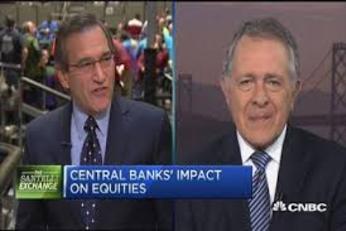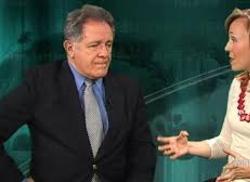Peter Eliades
Peter Eliades' has more than 50 years of technical stock market timing experience. He refuses to officially retire because he loves the market.
Several times in the fall of 1974, in a market that had seen the average share of stock drop for almost 6 years since December 1968, he predicted on KWHY that a major market bottom would occur during the week of December 9-13, 1974. The exact Dow low of 570.01 occurred on December 9, 1974. As a result of that spectacular and well noted forecast, publication of Stockmarket Cycles began in July of 1975. In 1982, he began a long string of appearances on FNN, the nation's first financial network. He made several notable forecasts on FNN, and his forecast for a very important market bottom on January 24, 1983, was widely noted for several weeks prior to that date.
I'm dedicated to being happy in my "retirement" and helping you be happy in yours!
On exactly January 24, 1983, the Dow ended a decline of over 8% and moved below the 1000 level for the last time prior to the start of what was a virtually uninterrupted 20 year run to the upside. There was an interruption of note in October 1987, of course. It was a 2 day crash of more than 28% intraday. In a subsequent report, the Wall Street Journal quoted Mark Hulbert as citing Stockmarket Cycles as one of the top two or three services in getting subscribers out of the market in a timely fashion before the crash.

Stockmarket Cycles' Fidelity Select Portfolio showed an annualized gain of 16.50%. The nearest competitor was at 12.49%. During the 2000-2003 bear market, Stockmarket Cycles performance was again #1 as tabulated by Hulbert with an annualized gain of 13.9% in the face of an S&P 500 loss of 43.4% from March 31, 2000-March 31, 2003. In the March 22, 1999 issue of Barron's, Eliades wrote an article that was greeted by guffaws and ridicule by the great majority of analysts and investors. Just as the Dow was approaching 10,000 for the first time in history, Eliades stated it could be years, even a decade or more before 10,000 was breached significantly. The epilogue of that story is now history. In 2001, Peter was honored by the MTA (Market Technicians Association) with the prestigious Charles Dow Award for excellence and creativity in Technical Analysis.
Mr. Eliades was a regular weekly panelist on ABC Network's weekly Sunday show, Business World in the 1990s, and has made frequent guest appearances on FNN, CNBC, Wall Street Week, Larry King Live, and Nightly Business Report. He has been featured in some of the nation's most prestigious publications including Barron's, The Wall Street Journal, and Forbes among others, and in a cover story in Futures Magazine. He has authored articles several articles published in Barron's. In recent years, Eliades has directed his attention to the development of trading systems, but has remained deeply involved with studying and developing technical indicators for analyzing the stock market. He is a gifted money manager, based on cyclic patterns in the market.

In 1985, the first year Stockmarket Cycles was rated by the independent rating services, Peter earned Timer Digest's "Timer of the Year" award and placed second in 1986 in a close race which wasn't decided until the final trading day of the year. In 1989, Mark Hulbert named Peter as the "Most Consistent Mutual Fund Switcher" based on his timing signals for the years 1985, 1986, 1987, and 1988. From January 1985 when Hulbert first started rating Stockmarket Cycles, through August 1990, Stockmarket Cycles had the #1 market timing record in the country with a timing gain of 174.3% versus a comparable gain in the Wilshire 5000 Total Return Index of 119%.
Peter repeated that winning performance once again from June 1986 through June 1996. Over that 10 year period, Stockmarket Cycles' Fidelity Select mutual fund portfolio was the leader by a very substantial margin over all the other rated mutual fund portfolios in the country. The September 1996 AAII Journal (American Association of Individual Investors) published a rating of the performance of 27 mutual fund portfolios from the country's best known newsletter writers from June 1986 through June 1996. The average annual gain of the other 26 portfolios was 9.13%.
In 2011 Peter wrote his last regular news letter and "retired" from the newsletter business. However, he continues with his 12+ hour days managing money and watching the market. When something excites him he writes a shorter report and posts it on his web page allowing his wisdom and decades of market knowledge to be shared with others.
Peter's analysis and methods have been referred to in multiple books and publications. Among these are:
Investing with Volume Analysis: Identify, Follow, and Profit from Trends By Buff Pelz Dormeier
Investing without Wall Street: The Five Essentials of Financial Freedom By Sheldon Jacobs
Essential Technical Analysis: Tools and Techniques to Spot Market Trends By Leigh Stevens
Seasonal Stock Market Trends by Jay Kaeppel
The Arms Index (TRIN) by Richard W. Arms,Jr
Technically Speaking by Chris Wilkinson
The Complete Guide to Market Breadth Indicators by Gregory L. Morris
Technical Analysis from A to Z by Steven B. Achelis
Market Philosophy
Peter Eliades’ approach to the market is based on the theory that stock prices move as a result of a combination of cyclical forces. The theory contends that the major trends of stocks and stock averages are determined by fundamentals which affect a stock or a stock average smoothly. The trend is sideways, up or down at varying angles, and is subject to change when fundamentals change. These smooth fundamental trends are affected by cycles and the cycles are most important for market timing because they repeat with a good degree of regularity. At any one time there are theoretically scores of cycles acting simultaneously on the market, making analysis a more difficult process than a simple breakdown of mathematical formulas.
You need have no understanding of cycles to take advantage of his periodic reports. Eliades' reports are based on 46 years of market analysis.
Although Eliades uses many orthodox technical indicators, what distinguishes his service from so many other technical services is his original work in technical analysis and his cycle projections. Eliades pioneering work on many technical indicators is recognized by technicians world wide. Eliades gave the Open 10 Trading Index its name. His indicators are usually simple to understand and are often accompanied by explanatory charts.
Since 1972 Eliades has developed these techniques and the results have earned him the reputation of being one of the best market analysts in the world.